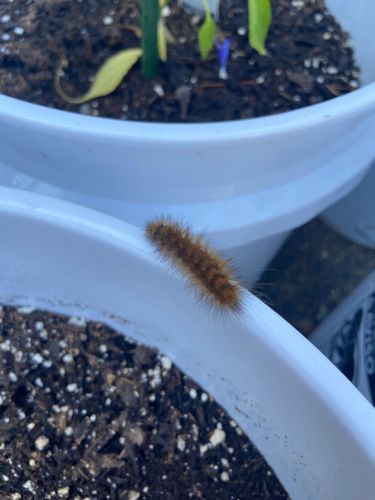Woolly Bear Caterpillar (likely Isabella Tiger Moth caterpillar)
Scientific Name: Pyrrharctia isabella (for the Isabella Tiger Moth)
Order & Family: Order: Lepidoptera, Family: Erebidae (formerly Arctiidae)
Size: As caterpillars, they typically grow to about 1.5 to 2 inches (3.8 to 5 cm) in length. The adult moths have a wingspan of about 1.5 to 2 inches (3.8 to 5 cm).

Natural Habitat
Widely distributed across North America, found in gardens, fields, roadside ditches, forests, and other temperate environments where host plants are available. They are a common sight in autumn.
Diet & Feeding
In their caterpillar stage, they primarily feed on a wide variety of broad-leaf plants, including grasses, dandelions, asters, sunflowers, and other low-growing vegetation. They are not typically considered significant agricultural pests.
Behavior Patterns
Woolly bear caterpillars typically hatch in late summer or early fall. They feed extensively to build up fat reserves, then overwinter as caterpillars, often under logs, rocks, or leaf litter. In spring, they emerge, feed a bit more, and then pupate, often forming a cocoon incorporating their own bristles. The adult moth emerges in late spring or early summer. Their furry appearance deters predators. They are known for 'hairy' locomotion, sometimes rolling into a ball when disturbed.
Risks & Benefits
Generally harmless to humans. While their bristles can cause mild irritation or dermatitis in some sensitive individuals if handled, they are not venomous. They are primarily a benefit to the ecosystem as herbivores that convert plant matter and serve as a food source for birds and other predators. As adult moths, they can be pollinators.
Identified on: 8/9/2025